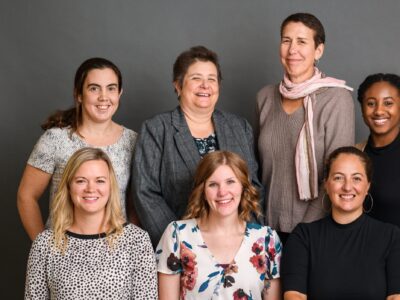Ending homelessness is a necessary and critical path to building a more equitable future. And for communities like Charlotte-Mecklenburg County, committing to equitably ending homelessness means addressing the disparities within and produced by their own homeless response system.
This North Carolina community has reduced veteran homelessness by more than 20% since 2019 and intend to reduce it by 30% by the end of 2021.
However, local statistics show that 77% of the homeless population in Mecklenburg County is Black, compared to 34% of the county’s general population. The local Built for Zero team has taken this troubling data to heart and responded by actively investing to improve the equity of their homeless response system by ensuring equitable representation in both decision-making and outcomes.
Committing to equity and inclusion
In early 2020, the leadership of the local Continuum of Care transitioned from the City of Charlotte to Mecklenburg County. Part of this restructuring included establishing an Equity and Inclusion Committee, which included representation from different parts of the community such as housing & homeless service providers, the faith community, and persons with lived experience of homelessness.
In March 2021, the new committee developed an equity survey with the help of Built for Zero to dig into the community’s system decision-making power (one of four key indicators in Built for Zero’s equity measurement framework The survey was administered to the staff of the agencies and organizations that composed the Charlotte-Mecklenburg Continuum of Care to find if each racial and ethnic group affected by policies, practices, and strategies were at the table and in leadership roles.

“That’s the purpose of the committee — to hold the community accountable to make sure we have more equitable outcomes.”
Shamika Agbeviade
Survey results revealed gaps of representation from young adults ages 18-24, individuals who identify as Hispanic, and individuals who identify as LGBTQ+. “That’s the purpose of the committee — to hold the community accountable to make sure we have more equitable outcomes,” said Shamika Agbeviade, HMIS Administrator and Chair of the CoC’s Equity and Inclusion Committee. “We have to deep dive into that data.”
Subsequently, the Equity and Inclusion Committee conducted intentional recruitment for committee seats from those underrepresented groups to ensure leaders in the Continuum of Care more closely reflected the community they served.
“We want to make sure we have those voices heard and those decision-making seats filled,” Agbeviade said.
Understanding the gaps
The community has also partnered directly with C4 Innovations to complete an equity assessment of the community’s outcomes.
“Of course our main goal is that we have equitable goals throughout the Continuum of Care,” Agbeviade explained. “Through this assessment, we can find out what we’re dropping the ball on so there are more equitable outcomes in the community.”
“Many people throughout the community saw the SPARC Report, and that raised questions about the bias inherent in the VI-SPDAT [a prioritization and assessment tool],” explained MaryAnn Priester. She is the Built for Zero Veterans Data Lead and the Homeless Management Information System (HMIS) Management Analyst at Mecklenburg County’s Community Support Services Department.
This analysis demonstrated the need to bring equity to all parts of their homeless response system.
“The very aspirational goal, knowing we can’t control everything, is that people of color are no longer disproportionately entering our system, and when they are in the system, successfully exit at equal rates as other populations,” explained Kathryn Firmin-Sellers, the Chief Impact Officer at the United Way of Central Carolinas. She’s also Vice Chair of the CoC’s Equity and Inclusion Committee and Chair of the CoC Governing Board.
Three key outcome indicators in the Built for Zero equity framework include equity in positive exit rates from homelessness, returns from housing to homelessness, and the length of time people are experiencing homelessness.
Moving toward more equitable outcomes
One inequity the committee wanted to address was the demonstrated over-representation of the Black community in Charlotte-Mecklenburg’s homeless population. They began by looking more closely at the tools and surveys the homeless response sector regularly utilized, reassessing the VI-SPDAT, for example.
“There’s a workgroup that has been diligent about trying to build an alternative prioritization tool,” Firmin-Sellers said. “It looks at structural and systemic factors that would cause historical vulnerability.”
The community has begun implementing a newly developed assessment to all persons who are literally homeless. This tool includes the VI-SPDAT and additional supplemental questions, which so far has produced more equitable outcomes. The Equity and Inclusion Committee and the Coordinated Entry Oversight Committee will track the results to make sure they’re progressing by collecting data for six months, after which they plan to conduct a more thorough analysis.




